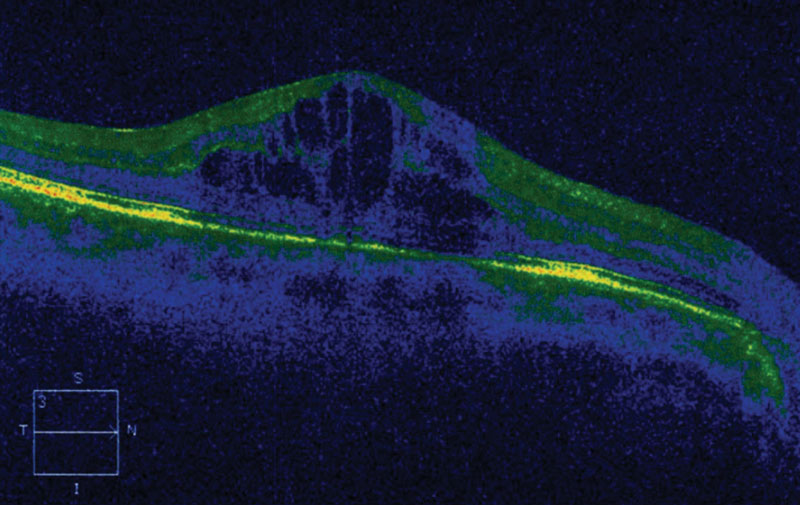 |
Macular edema is accompanied by a higher financial burden. Photo: Joseph W. Sowka, OD. Click image to enlarge. |
Noninfectious uveitis (NIU) is accompanied by several complications, uveitic macular edema (UME) being one of the most common. UME has numerous clinical consequences, which may result in an economic burden. This study researched patient characteristics and healthcare costs associated with UME in clinical practice.
Over 36,000 patients with NIU were identified, with over 3,000 showing UME and the majority, over 33,000, not. Patients with UME more frequently received NIU-related treatment compared with those without UME (64.6% vs. 45%), particularly local steroid injection (LSI) treatment (12.5% vs. 0.7%). Healthcare costs per patient per year (PPPY) were higher among patients with UME ($19,851) than patients without UME ($16,188) and were especially high among those with bilateral UME ($24,162). Additionally, vision loss was more commonly observed in those with UME vs. those without UME (5.7% vs 2.2%) and a trend of increasing healthcare costs with increasing vision loss was observed.
This clinical burden translated to higher costs associated with UME compared with NIU alone, which were highest among patients with bilateral disease and those with blindness.
The study authors attributed the higher costs to several factors, including the high frequency of bilateral disease among patients with UME (27.4%), especially among the subgroup with UME and LSI (50.1%). “Indeed, bilateral disease was associated with the highest costs PPPY compared with unilateral or unspecified disease,” the authors noted. “Additionally, increasing vision loss resulted in progressively higher medical costs, ranging from $11,054 among patients with no indicator of visual loss to $53,767 among those with blindness.”
Pharmacy costs were also a driver of the high expenses associated with UME. “Of note, from a clinical standpoint, all patients with active UME or NIU would be expected to be treated; however, treatment rates were measured among a representative sample of patients with UME or NIU at any time, which included both patients with active and resolved disease during the study period, who may or may not require treatment,” the authors explained. “The high rates of NIU treatment in addition to increased medical costs among patients with UME suggests a potential unmet need for targeted management of the condition in this patient population.”
They suggest future studies be conducted to determine if the development of targeted therapy for UME may help to reduce clinical and economic burden.
Hariprasad SM, Joseph G, Gagnon-Sanschagrin P, et al. Healthcare costs among patients with macular edema associated with non-infectious uveitis: a US commercial payer’s perspective. BMJ Open Ophthalmol. October 23, 2021. [Epub ahead of print]. |

